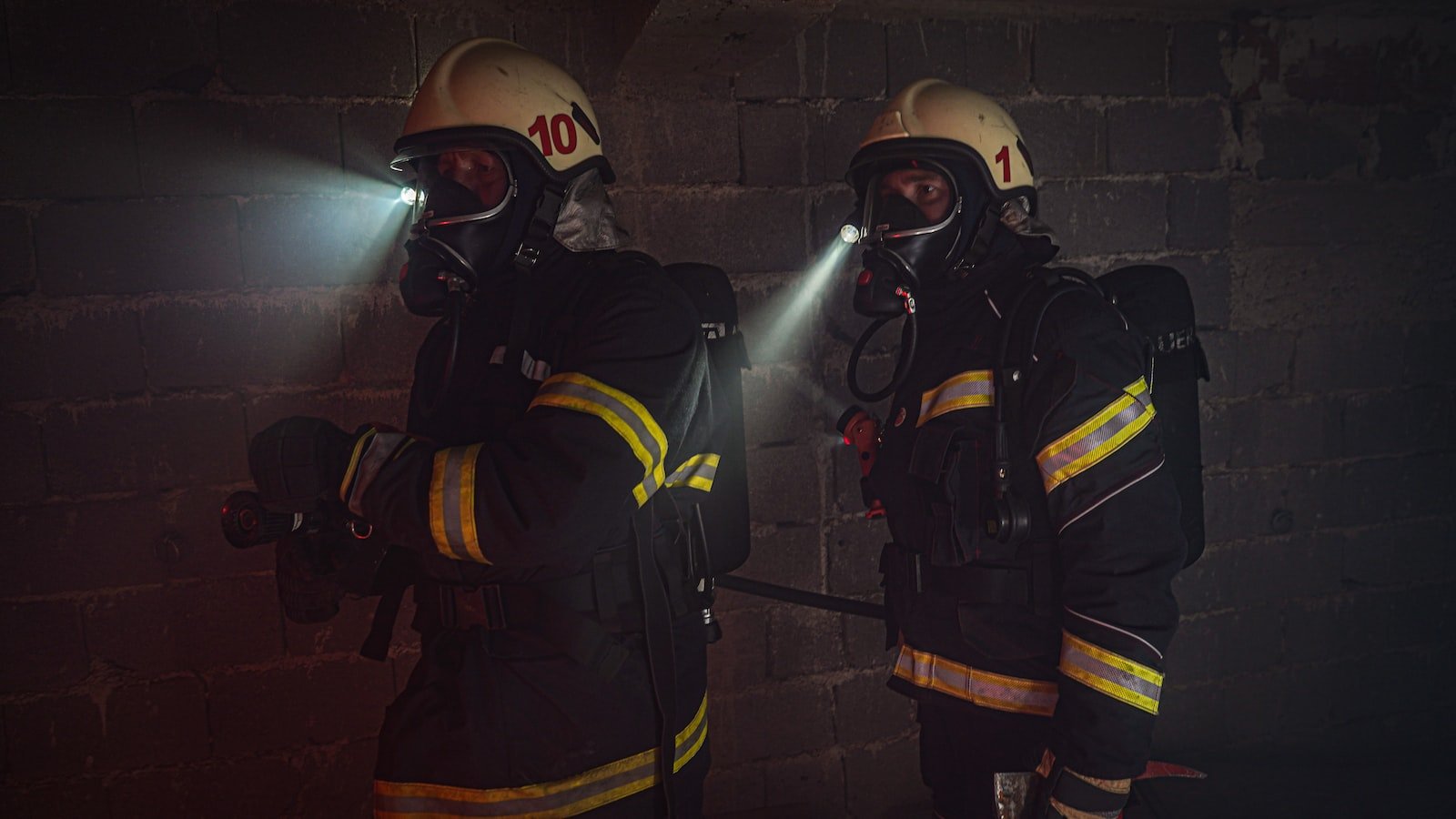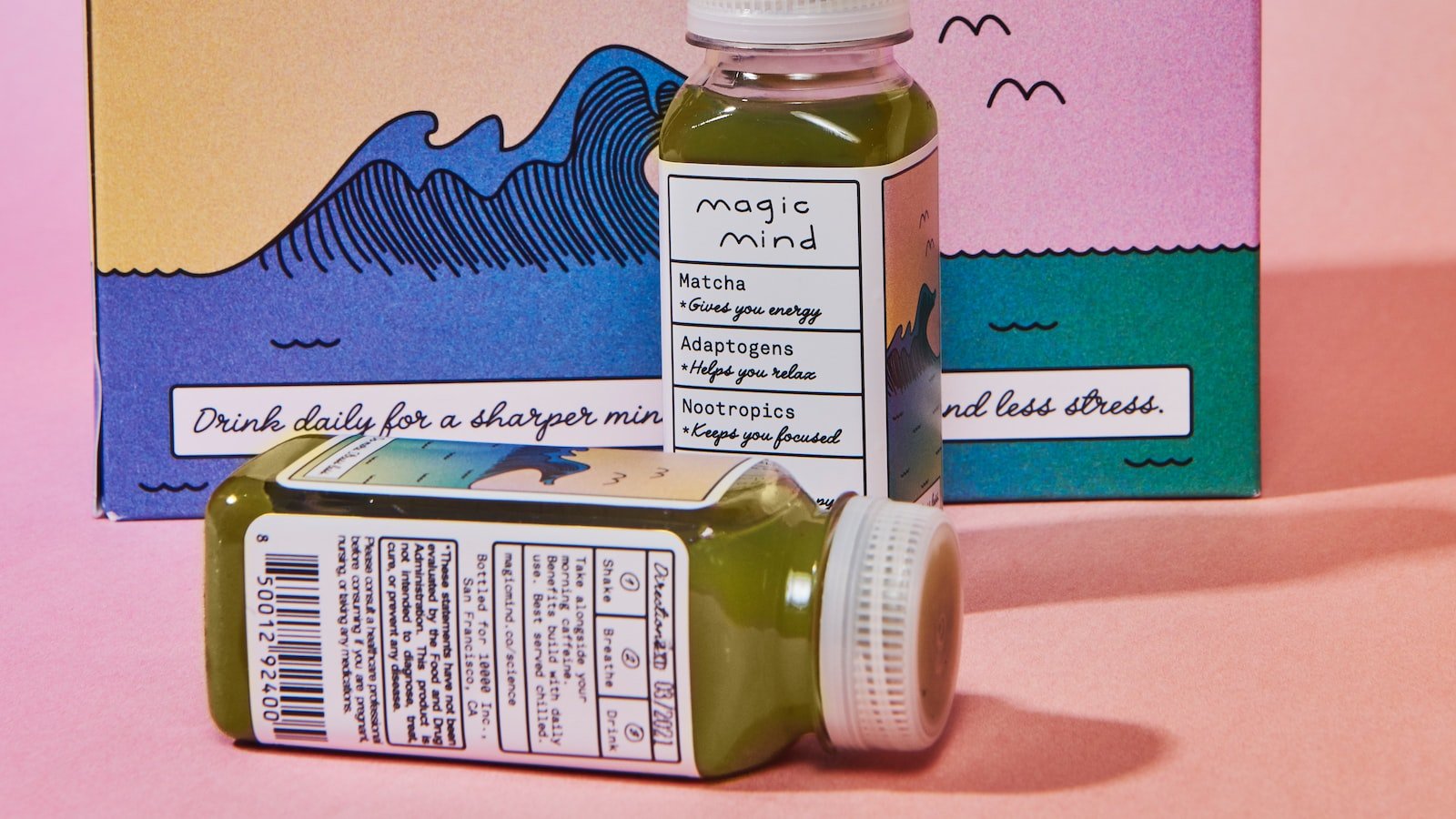Now Reading: How to Make Your Own Emergency Rations
-
01
How to Make Your Own Emergency Rations

How to Make Your Own Emergency Rations
In the ever-unpredictable realm of life, being prepared for the unexpected is not merely a virtue – it is an art. Picture this scene: you find yourself stranded in the wilderness, rays of daylight making their final retreat beyond the horizon, as hunger gnaws persistently at your stomach. Fear not, for in this article, we shall dive headfirst into the world of emergency rations, equipping you with the knowledge and skills to create your very own lifesaving provisions. Whether you are an adventure enthusiast, survivalist, or simply someone with a penchant for self-sufficiency, this guide will unveil the secrets to crafting your own edible lifelines, ensuring you never go hungry even in the midst of the most dire circumstances. So, sharpen your kitchen knives and let us embark on a journey towards self-reliance and culinary salvation.
Table of Contents
- Creating Long-lasting Emergency Rations: Ensuring Nutritional Value and Shelf Life
- Key Ingredients for Emergency Rations: Choosing the Right Balance of Nutrients and Calories
- Smart Packaging strategies: Preserving Rations for Extended Periods of Time
- DIY Emergency Rations: Step-by-Step Guide to Home Preparation
- Maximizing Space and Portability: Innovative Solutions for Compact Emergency Rations
- Q&A
- To Conclude

Creating Long-lasting Emergency Rations: Ensuring Nutritional Value and Shelf Life
In times of crisis or natural disasters, having long-lasting emergency rations can be a game-changer, providing not only sustenance but also peace of mind. But how can we ensure that these rations maintain their nutritional value while also having a lengthy shelf life? Let’s delve into some effective strategies:
- Quality Ingredients: The foundation of any long-lasting emergency ration lies in the quality of its ingredients. Opt for nutrient-rich foods that are less prone to spoilage, like dehydrated fruits and vegetables, whole grains, and lean proteins. These ingredients not only provide essential vitamins and minerals but also contribute to a balanced diet, ensuring the overall well-being of beneficiaries.
- Scientific Preservation Techniques: To maximize the shelf life of emergency rations, employing scientific preservation techniques is key. Vacuum-sealing or canning preserves the nutritional content of the ingredients by protecting them from air, moisture, and light. Additionally, incorporating natural additives, such as antioxidants or naturally-derived preservatives, can further extend the lifespan of these rations without compromising their nutritional value.
- Regular Quality Control: To guarantee the safety and nutritional value of emergency rations, consistent quality control measures should be implemented. Routine testing and analysis help identify any potential issues such as spoilage, contamination, or nutrient degradation. These measures ensure that the rations meet established standards and are safe for consumption, even after an extended period of storage.
By adhering to these strategies, we can create long-lasting emergency rations that not only provide sustenance during challenging times but also uphold their nutritional value, ensuring the well-being of individuals who rely on them the most.

Key Ingredients for Emergency Rations: Choosing the Right Balance of Nutrients and Calories
When it comes to choosing the right ingredients for emergency rations, finding the perfect balance of nutrients and calories is crucial. In times of crisis, it is important to provide our bodies with the necessary fuel to keep us going. Here are some key ingredients that should be on your radar:
- Protein: Protein is essential for repairing and building tissues, making it a crucial element in emergency rations. High-protein foods like canned meats, beans, and nuts are excellent choices for long-term sustenance.
- Carbohydrates: Carbohydrates are the body’s primary source of energy. Opt for complex carbohydrates such as whole-grain products, oats, or rice, as they provide sustained energy and keep you feeling fuller for longer.
- Fats: Healthy fats provide concentrated energy and aid in the absorption of vital vitamins. Include sources like nuts, seeds, and olive oil in your emergency rations for a well-rounded intake.
- Vitamins and Minerals: Maintaining proper nutrition is essential during emergencies. Consider including a variety of canned fruits and vegetables to ensure you receive a good balance of vitamins and minerals.
- Hydration: Remember that water is a vital component for survival. In addition to food, storing an adequate supply of potable water is crucial for any emergency situation.
With these key ingredients in mind, you can create emergency rations that provide the necessary nutrients and calories to sustain you in times of need. Remember to regularly review and replenish your supplies to ensure their quality and effectiveness.

Smart Packaging strategies: Preserving Rations for Extended Periods of Time
In today’s rapidly evolving world, preserving rations for extended periods of time has become more crucial than ever before. With various challenging circumstances like natural disasters, global pandemics, and military operations, it is essential to develop smart packaging strategies that can ensure the longevity of our food supplies. These strategies not only help in emergency situations but also have long-term benefits for industries such as space exploration, remote expeditions, and healthcare.
1. Oxygen Absorption: One of the vital elements in smart packaging strategies is removing oxygen from the food packaging to prevent spoilage. Oxygen absorbers placed within the packaging act as an effective barrier against bacteria growth, color degradation, and taste alteration.
2. Moisture Control: Controlling moisture levels plays a significant role in sustaining the quality and taste of rations. By implementing moisture-absorbing sachets or packets, we can prevent the growth of mold, reduce the risk of bacterial contamination, and maintain the desired texture of the preserved food.
3. Temperature Regulation: Maintaining the optimal temperature is crucial for extending the shelf life of packaged rations. Innovative packaging techniques, such as insulated materials and phase change materials, help control the temperature and protect the contents from external heat sources, thus enhancing the longevity of the food products.
By harnessing these smart packaging strategies, we can revolutionize the way we preserve rations. Not only will this ensure our survival in challenging situations, but also promote sustainable practices and minimize food waste on a global scale.
DIY Emergency Rations: Step-by-Step Guide to Home Preparation
During emergencies, it’s essential to have a reliable food supply that can sustain you and your family. Creating your DIY emergency rations is a cost-effective and efficient way to ensure you have enough food to last during challenging times. Follow these simple steps to prepare your own emergency rations at home:
Gather the essentials:
- Start by collecting a variety of non-perishable food items such as canned goods, energy bars, nuts, and dried fruits. Make sure to choose items with long shelf lives.
- Include staple foods like rice, pasta, and beans that can provide necessary carbohydrates and proteins.
- Don’t forget to stock up on bottled water, as water is crucial for survival.
Calculate the portions:
Determine the number of rations you need based on the number of people in your household and the estimated duration of the emergency. Aim for a three-day supply per person as a minimum. Keep in mind any special dietary needs or restrictions.
Package and label:
- Divide the food items into individual portions, considering the number of meals per day and the nutritional requirements.
- Use airtight and waterproof containers or food-grade vacuum-sealed bags to package the rations. Label each package with the contents and the date of preparation for easy organization and rotation.
- Store the emergency rations in a cool, dry place away from direct sunlight to maximize their shelf life. Regularly check and replace expired items.
By taking the time to prepare your DIY emergency rations, you’ll have peace of mind knowing you’re ready to face any unexpected situation. Stay prepared, stay safe!
Maximizing Space and Portability: Innovative Solutions for Compact Emergency Rations
In today’s fast-paced world, being prepared for emergencies is essential, and having compact emergency rations is a game-changer. With limited space and the need for portability, innovators have come up with ingenious solutions to maximize both factors. Let’s explore some of these innovative ideas:
1. *Vacuum-sealed packaging*: One of the key ways to maximize space is by utilizing vacuum-sealed packaging. This method ensures that the food is tightly sealed, eliminating any excess air inside. The result? A compact and space-saving solution that can easily fit into any emergency kit or backpack.
2. *Dehydrated and freeze-dried options*: To further optimize space, dehydrated and freeze-dried food options have gained popularity. These food items undergo a special process where the moisture is extracted, reducing their size significantly without compromising on taste or nutritional value. These lightweight and compact solutions are a perfect fit for emergency situations.
3. *Multiple-use packaging*: Another innovative solution is the use of multiple-use packaging that serves dual purposes. For example, some compact emergency rations now come in packaging that can be transformed into a pot for cooking or a cup for rehydrating food. This clever design not only saves space but also eliminates the need to carry additional cooking equipment, making it incredibly portable.
These innovative solutions demonstrate that maximizing space and portability in emergency rations is attainable. Whether it’s vacuum-sealed packaging, dehydrated options, or multi-functional packaging, these advancements ensure that you can be prepared for emergencies without compromising on the limited space available. Stay prepared, stay safe!
Q&A
How can I begin making my own emergency rations?
Start by gathering non-perishable food items such as canned goods, dried fruits, nuts, granola bars, and ready-to-eat meals. Ensure you store an adequate supply for each family member and consider their dietary needs and preferences.
How important is it to include water in emergency rations?
Water is essential for survival, so it is crucial to include a sufficient supply in your emergency rations. Plan on storing at least one gallon of water per person per day for drinking and sanitation purposes.
What type of storage containers should I use for my emergency rations?
Choose airtight and waterproof containers, such as food-grade plastic buckets with tight-fitting lids, to store your emergency rations. Additionally, consider using resealable plastic bags for smaller individual food items to maximize space and minimize spoilage.
What should I consider when selecting food items for my emergency rations?
Prioritize food items that have a long shelf life and are packed with essential nutrients. Opt for low-sodium options to reduce thirst and choose a variety of foods to ensure a balanced diet during emergencies.
How often should I rotate my emergency rations?
Regularly check the expiration dates on your emergency food items and rotate them every six months to a year, replacing them with fresh supplies. Remember to consume and replace any emergency rations you open for regular use.
Can I include any special dietary items in my emergency rations?
Absolutely! If you or any of your family members have specific dietary requirements or allergies, be sure to select food items that accommodate those needs. There are various options available, including gluten-free, lactose-free, and vegetarian products.
Should I pack any utensils or cooking equipment with my emergency rations?
Yes, it is wise to include basic eating utensils, such as can openers, cutlery, and plates, in your emergency supply kit. Additionally, consider portable cooking equipment, like camping stoves or dishes that can be heated over a fire, if feasible in your situation.
What other items should I include in my emergency rations?
In addition to food and water, it is important to include essential items like a first aid kit, flashlights, batteries, a radio, blankets, and personal hygiene products. Customize your emergency rations based on the needs of your household.
Where should I store my emergency rations?
Find a cool, dry, and dark place to store your emergency supplies. Avoid areas prone to flooding or extreme temperatures, such as garages or sheds. Consider using a specific cupboard or closet to keep everything neatly organized and easily accessible.
How long should I aim for my emergency rations to last?
It is recommended to store at least a three-day supply of emergency rations for each person. However, aiming for a two-week supply is even better, as it provides more reassurance during extended emergencies or natural disasters.
To Conclude
In a world filled with uncertainty, being prepared for the unexpected is paramount. We’ve explored the essential art of creating your own emergency rations, empowering you to take control of your sustenance in times of crisis. From basic principles to ingenious recipes, you now possess the knowledge to concoct survival meals that will make the difference between mere survival and thriving in challenging situations.
Remember, crafting emergency rations goes beyond practicality; it is an art of self-sufficiency and resilience. As you embark on this culinary adventure, adaptability becomes your most trusted companion. Whether you opt for simple staples or embrace creativity with delightful twists, your survival pantry will now be brimming with life-saving goodness.
As the backbone of your emergency preparedness plan, your homemade rations will not only nourish your body but also uplift your spirit, reminding you that you are in charge of your destiny. They will serve as a testament to your resourcefulness and ability to tackle adversity with a culinary flair.
Do not let your newfound knowledge hibernate in the depths of complacency. Revisit your emergency rations regularly, ensuring they remain fresh, relevant, and perfectly tailored to your needs. Rotate ingredients and try new recipes, experimenting with flavors to make this journey an ongoing culinary delight.
So, fellow adventurers, armed with a well-stocked survival pantry and a sprinkling of creativity, you can now stride confidently into the unknown. Hope no longer thrives solely in external lifelines; it flourishes within your resourcefulness, as you reimagine and redefine what it means to be prepared.
Remember, preparation is not born of fear but rather wisdom, and your newfound wisdom will guide you through the darkest of nights. So, embrace the art of creating your own emergency rations and savor the peace of mind it brings. The world shall quiver in the presence of your preparedness, and you shall rise above any challenge, nourishing your body and feeding your soul with the sustenance of resilience.
Go forth, intrepid souls, and let the light of preparedness guide your path, as you consume not only rations, but also the unyielding strength that lies within you.
As an affiliate, my content may feature links to products I personally use and recommend. By taking action, like subscribing or making a purchase, you’ll be supporting my work and fueling my taco cravings at the same time. Win-win, right?
Want to read more? Check out our Affiliate Disclosure page.





